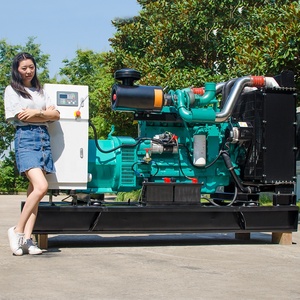
All categories
Featured selections
Trade Assurance
Buyer Central
Help Center
Get the app
Become a supplier

(140 products available)











































200 amp alternators are used in heavy-duty vehicles and can be divided into various types based on different factors. Here are some common ones:
200 Amp High Output Alternator:
This type of alternator is used to upgrade the standard stock alternator. It is suitable for various applications, including trucks and custom cars. The alternator provides reliable and consistent output, even at idle speeds. This feature is important for users who run many electronic accessories and need to maintain their energy levels.
200 Amp Dual Alternator Setup:
This setup is mainly used for heavy-duty applications. For example, it can be used in trucks or buses. The two alternators work together to produce a high current output. This feature supports a larger battery bank or powers many electronic devices. The dual setup also provides redundancy, ensuring a reliable power supply even if one alternator fails.
Internal and External Regulated 200 Amp Alternators:
The 200 amp alternators can be regulated internally or externally. Internally regulated 200 amp alternators have a voltage regulator built into the alternator case. They are commonly used because of their compact size and reliability. On the other hand, externally regulated alternators have a separate voltage regulator mounted away from the alternator. These alternators allow for better voltage control and are often used in high-performance or racing applications.
High-Performance 200 Amp Racing Alternators:
These alternators are designed for use in racing or high-performance applications. They are engineered to provide maximum current output at high engine speeds. Additionally, they are lightweight and can be used in applications where weight reduction is critical. For example, the alternators can be used in sports cars.
Every kind of alternator has its own specifications, which include capacity, size, weight, voltage, and so on. However, the specifications of the 200 amp alternator are as follows.
Maintaining a 200-amp alternator is very important to ensure that it lasts longer and operates efficiently. Here are a few tips for maintaining a 200 amp alternator:
Choosing the right 200 Amp alternator for a specific application requires careful consideration of several factors to ensure optimal performance and longevity.
Output Capacity
The output capacity of a 200 amp alternator is very important. It should be more than the power needed by the electrical parts of the vehicle. This includes the lights, sound system, GPS, and any other electronics. When selecting an alternator, the user should consider future upgrades to the electrical system or accessories that might be added. This is to ensure that the alternator can handle the extra load.
Voltage Regulation
A 200 amp alternator must have a good voltage regulator to maintain a steady voltage supply to the electrical system. This is important, especially when the load is fluctuating. The voltage regulation of the alternator ensures that the connected devices do not get damaged from overvoltage or undervoltage.
Physical Size and Compatibility
The physical size of the alternator is also important. The 200 amp alternator should fit perfectly in the available space. This is because alternators come in different physical sizes. Also, the mounting options and pulley size of the alternator should be compatible with the vehicle's engine.
Quality and Reliability
The quality and reliability of the 200 amp alternator should be considered. It is advisable to choose alternators from trusted brands or manufacturers. This is because, in most cases, the products of these brands are of high quality. Also, read reviews and seek recommendations from other users to find out about the reliability of the alternator.
Cooling and Heat Dissipation
Consider the cooling and heat dissipation of the alternator. A 200 amp alternator that has a good cooling mechanism will last longer. This is because, during operation, the alternator generates heat. If this heat is not dissipated, it will reduce the efficiency of the alternator and can cause damage to the electrical components inside the alternator.
Many vehicles come with a stock 200 amp alternator upgrade. However, the process of installing an upgraded 200 amp alternator is not simple, and it requires some electrical knowledge. Here are the general steps for replacing the 200 amp alternator:
Q1: Do you need to upgrade the wiring when installing a 200 amp alternator?
A1: It’s not always necessary, but it’s often recommended to ensure optimal performance and avoid potential issues.
Q2: What are some common signs of a failing alternator that requires an upgrade?
A2: Dimming lights, a weak battery, strange noises, and warning lights on the dashboard are all signs of a failing alternator.
Q3: Can a 200 amp alternator be installed on a vehicle without any modifications?
A3: A 200 amp alternator might require some modifications on certain vehicles. These modifications could include adapting the mounting hardware or changing the electrical connections.